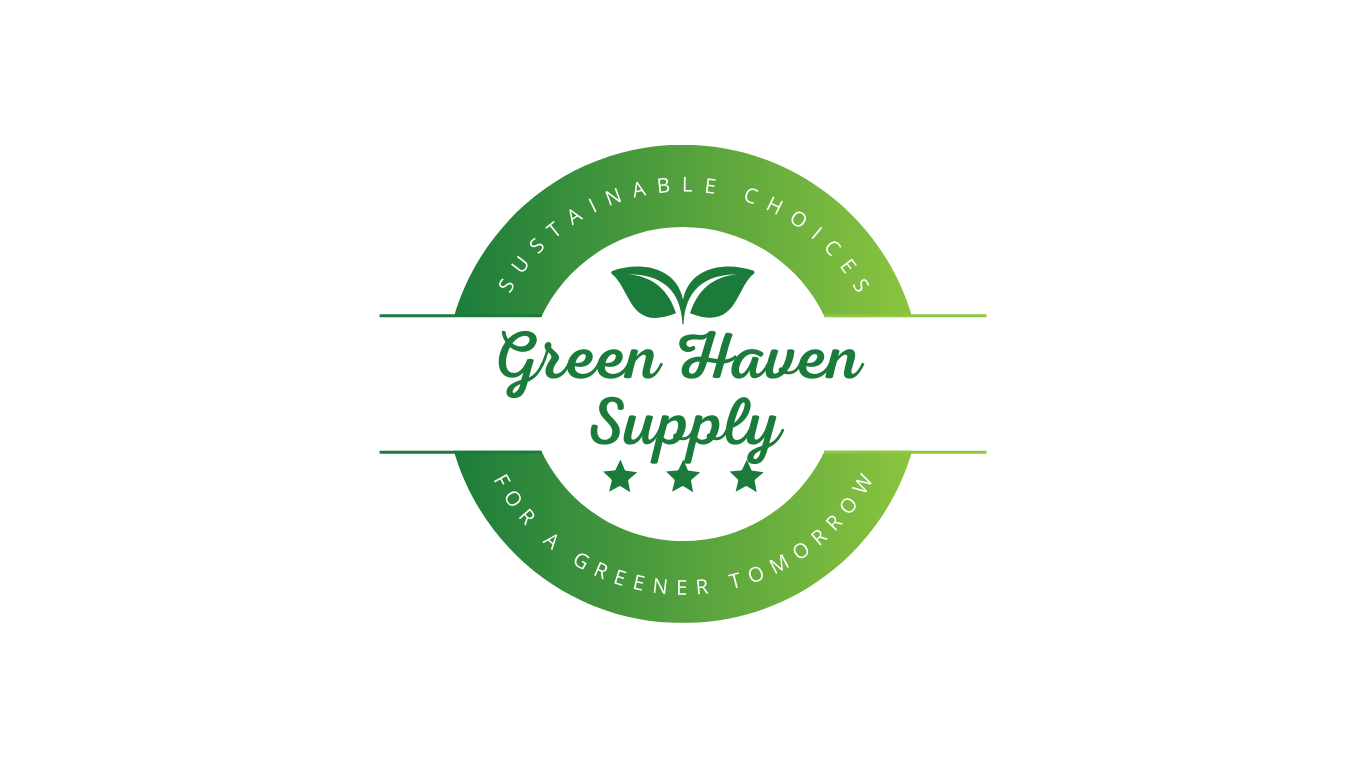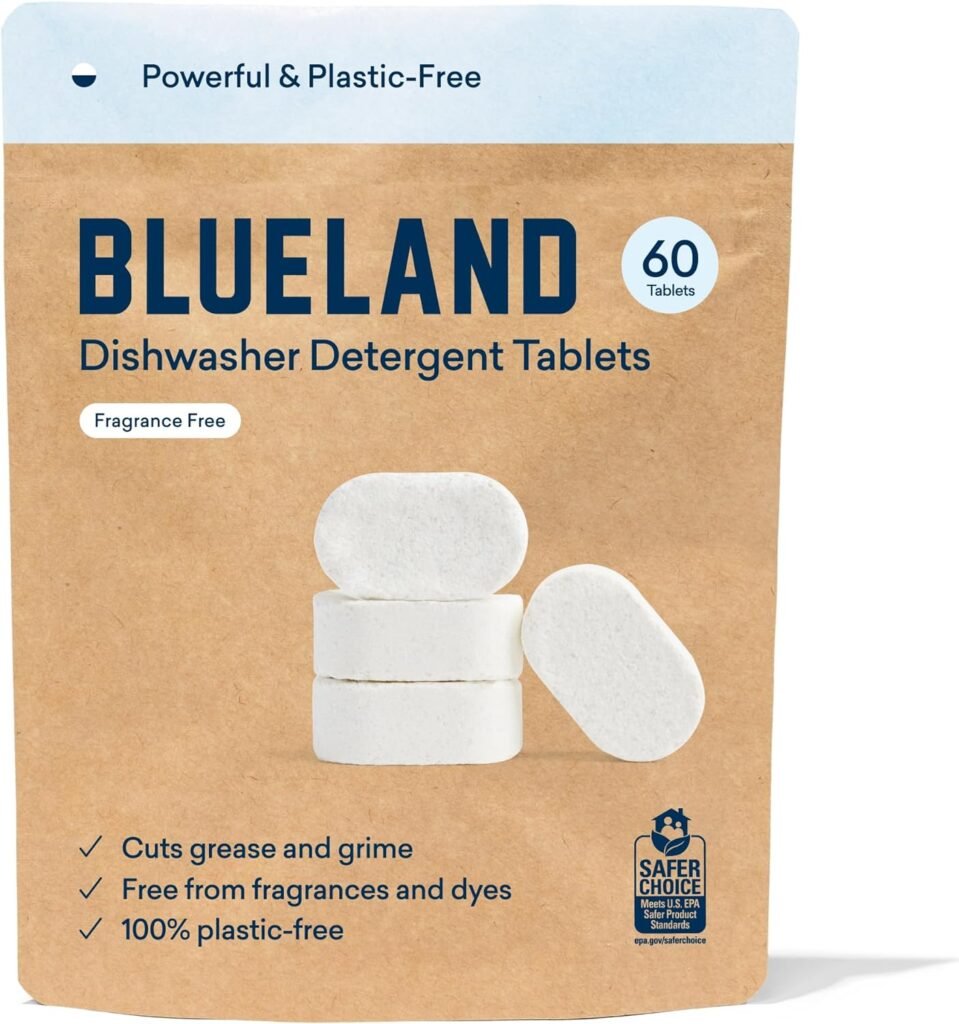Introduction to Compostable Paper Plates
Compostable paper plates are a sustainable alternative to traditional paper and plastic dinnerware, specifically designed to break down and return nutrients to the soil after disposal. Unlike conventional paper plates, which may contain harmful chemicals or coatings that prevent biodegradation, compostable options are made from renewable resources, such as plant fibers, and are processed without the use of toxic substances. This results in products that can decompose naturally in composting facilities, significantly reducing the environmental footprint associated with disposable dining options.
The growing trend towards sustainable dining solutions has led to an increased demand for eco-friendly products like compostable paper plates. As awareness about the impact of plastic pollution and non-biodegradable materials becomes more pronounced, both consumers and businesses are seeking alternatives that align with their values. By choosing compostable paper plates, not only do individuals minimize their contribution to landfill waste, but they also support the broader movement towards a circular economy where materials are reused and recycled rather than discarded.
- MATERIALS: 100% compostable, biodegradable disposable plates. All Earths Natural Alternative plates are environmental-fr…
- FEATURES: Our eco-friendly paper plates are microwavable, thick, and strong, with no plastic or wax lining, unbleached, …
- FOOD: Earth’s Natural 6-inch small plates are perfect for appetizers, or desserts such as a slice of cake, pie, ice crea…
Understanding the importance of compostability for the environment is crucial for fostering responsible consumption. Compostable products break down within a few months in a natural composting environment, unlike plastic plates that can take hundreds of years to decompose. This accelerated breakdown process plays a vital role in reducing the accumulation of waste and enhancing soil quality. Furthermore, the use of such eco-friendly alternatives reflects a commitment to environmental stewardship, encouraging others to adopt similar sustainable practices.
In essence, compostable paper plates represent a significant step towards reducing environmental harm, appealing to the conscious consumer, and inspiring more sustainable choices in dining. The responsibility lies not only with businesses in providing accessible eco-friendly products, but also with consumers to actively choose and promote these solutions in their daily lives.
Understanding Compostability: What Does It Mean?
Compostability refers to the capacity of a material to break down into natural, non-toxic components when subjected to specific environmental conditions. This process typically occurs in a composting environment where the right combination of moisture, temperature, oxygen, and microorganisms are present. Materials that are considered compostable can decompose within a set timeframe, generally ranging from a few weeks to a few months, depending on various factors such as the material’s composition and the conditions of the composting system.
It is important to distinguish between the terms “biodegradable” and “compostable.” While all compostable materials are biodegradable, not all biodegradable materials qualify as compostable. Biodegradable items can break down into smaller pieces through natural processes, but they may not necessarily decompose into nutrient-rich soil within a specific time frame or under particular conditions. In contrast, compostable items are specifically engineered to break down fully, returning valuable nutrients to the ecosystem without leaving harmful residues.
The benefits of composting extend beyond merely reducing waste. Composting promotes the recycling of organic materials, like food scraps and paper products, which can significantly reduce the amount of waste that ends up in landfills. Landfills are notorious for producing methane, a potent greenhouse gas, while composting helps to capture carbon in the soil and enriches it. Furthermore, composting provides an eco-friendly alternative to traditional waste disposal methods, allowing individuals and communities to contribute positively to environmental health.
Understanding the nuances of compostability is critical for making eco-conscious choices, especially when selecting products such as 100% compostable paper plates. By opting for compostable items, consumers can support sustainable practices and help mitigate the negative impacts of waste on the environment.
Materials Used in 100% Compostable Paper Plates
Compostable paper plates are increasingly recognized as a sustainable alternative to traditional disposable tableware, primarily due to the raw materials utilized in their production. These plates are predominantly crafted from recycled paper fibers, which significantly contribute to reducing deforestation and conserving natural resources. By reusing materials that would otherwise contribute to landfill waste, manufacturers can create a product that not only serves its functional purpose but also promotes environmental stewardship.
In addition to recycled paper, many 100% compostable paper plates incorporate plant-based materials, such as sugarcane pulp and bamboo. Sugarcane, specifically, offers a compelling advantage; its fibrous residue, known as bagasse, is often discarded after the extraction of sugar. This byproduct is a renewable resource that, when utilized in plate production, reduces overall waste and provides an eco-friendly alternative to petroleum-based products. Bamboo, on the other hand, grows rapidly and can be harvested sustainably, making it an ideal candidate for environmentally friendly tableware.
- ECO-FRIENDLY CHOICE: These aren’t just plates or bowls; they’re a revolution made from recycled/repurposed bagasse and b…
- BIODEGRADABLE CHAMPIONS: These BPI-certified 100% compostable all-stars aren’t destined for the landfill. At a commercia…
- HEAVY-DUTY AND MICROWAVABLE: Don’t underestimate these nature warriors. Our plates are four times stronger than standard…
The choice of these materials in manufacturing compostable paper plates not only minimizes the reliance on harmful plastics but also ensures that the product can break down efficiently in composting facilities. This process transforms organic waste into nutrient-rich soil, enhancing soil health and supporting the ecosystem. Additionally, the use of biodegradable adhesives and coatings in these plates further ensures that they do not introduce toxic substances into the environment.
Overall, the incorporation of recycled paper fibers and plant-based materials like sugarcane and bamboo into compostable paper plates significantly enhances their sustainability profile. By understanding the benefits of these materials, consumers can make informed choices that contribute to reducing plastic waste while still enjoying the convenience of disposable tableware.
Benefits of Using 100% Compostable Paper Plates
The adoption of 100% compostable paper plates represents a significant step towards environmental responsibility. One of the primary advantages of using these plates is their beneficial impact on the ecosystem. Traditional plastic and Styrofoam plates contribute to long-term pollution, as they can take hundreds of years to decompose. In contrast, compostable paper plates break down within a few months when placed in a composting environment, significantly reducing landfill waste and promoting a healthier planet.
Another notable benefit lies in convenience. 100% compostable paper plates provide the same practicality as their conventional counterparts without the associated environmental harm. They are lightweight and easy to handle, making them an ideal choice for events, picnics, and parties. Users can dispose of them without the guilt of contributing to plastic pollution, as they seamlessly integrate into the composting process. This convenience, paired with an eco-conscious choice, makes them an attractive alternative for consumers today.
The use of compostable paper plates also plays a critical role in waste management and the reduction of one’s carbon footprint. By choosing compostable options, individuals and businesses can contribute to a circular economy. As these plates decompose, they enrich the soil with valuable nutrients, which supports plant growth and fosters a healthier ecosystem. Furthermore, the production of compostable paper products typically involves sustainable practices, such as sourcing materials from responsibly managed forests and utilizing less energy compared to traditional plastic manufacturing.
Incorporating 100% compostable paper plates into daily life is not only a decision that contributes positively to the environment, but it also demonstrates a commitment to sustainability and eco-friendliness. Such choices collectively promote a movement towards less waste and a cleaner planet for future generations.
Comparing Compostable Plates to Traditional Options
In today’s environmentally-conscious society, the choice of dining ware significantly impacts our ecological footprint. Traditional paper and plastic plates have been the go-to options for many, but their environmental drawbacks are becoming more apparent. This has led to the rising popularity of 100% compostable paper plates, which offer an eco-friendly alternative. Understanding the differences between these options—particularly in terms of environmental impact, usability, price points, and consumer preferences—can aid consumers in making informed decisions.
First and foremost, the environmental impact of traditional plates versus compostable options is a critical consideration. Traditional plastic plates contribute to long-term pollution, as they do not decompose and often end up in landfills and oceans, where they pose threats to wildlife and ecosystems. Conversely, compostable paper plates break down efficiently in composting environments, returning nutrients to the soil without leaving harmful residues. This natural decomposition process supports sustainable waste management practices, making compostable plates a clear winner in terms of eco-friendliness.
- 5-COMPARTMENT TRAYS: Serve full meals in convenient style with compostable food trays. Providing five separate compartme…
- 100% SUGARCANE FIBER: The tray is made of 100% sugarcane fiber, a sustainable, renewable, and biodegradable material. A …
- 100% COMPOSTABLE: Since it’s made from 100% sugarcane fiber, the tray can be commercially composted (no need to send it …
Usability is another important aspect to evaluate. While traditional paper plates are readily available and often favored for their sturdiness, compostable options have advanced significantly in this area. Many compostable plates are designed to be microwavable and leak-resistant, ensuring they can handle various food types without compromising structural integrity. Moreover, consumer preferences are shifting, with growing awareness surrounding sustainability influencing dining preferences. As more individuals prioritize environmental considerations, the demand for compostable plates continues to rise.
In terms of price, traditional plates can sometimes be more affordable upfront. However, many consumers are increasingly willing to pay a premium for compostable options, given their long-term environmental benefits. Ultimately, selecting between compostable paper plates and traditional plates involves weighing immediate costs against sustainable practices that benefit our planet.
Creative Uses for 100% Compostable Paper Plates
100% compostable paper plates offer a versatile solution that extends beyond the realm of dining. Their eco-friendly nature and practical design make them ideal for various creative uses, suitable for both formal occasions and casual gatherings. By incorporating these plates into diverse activities, individuals can support environmental sustainability while enhancing their event experiences.
For example, compostable paper plates can serve as an excellent base for craft projects. Children and adults alike can utilize them for painting, drawing, or creating decorative masks. These activities not only promote creativity but also provide a sustainable alternative to traditional crafting materials that may contribute to landfill waste. After the crafting session, participants can compost the used plates, ensuring a minimal environmental impact.
When planning parties, consider themed events that highlight sustainability. For instance, a garden party can utilize compostable paper plates adorned with natural motifs. This setting can encourage guests to take part in eco-friendly practices by using these plates for serving organic snacks while appreciating the outdoors. Furthermore, integrating compostable options can communicate a commitment to the environment, fostering a sense of community awareness among attendees.
In everyday life, compostable paper plates can be a practical solution for picnics, barbecues, or family gatherings. They simplify cleanup and are especially useful for outdoor events where traditional dishware may be cumbersome to transport. By opting for these plates instead of plastic or styrofoam, individuals can significantly reduce waste. Additionally, using compostable paper plates at home can facilitate an easier recycling process, promoting responsible disposal methods within the household.
Overall, the creative uses of 100% compostable paper plates are limited only by one’s imagination. By embracing these versatile items for various settings and activities, people can contribute to a more sustainable future while enjoying the benefits of convenience and style.
How to Properly Compost Your Paper Plates
Composting 100% compostable paper plates requires adherence to certain guidelines to ensure an effective breakdown. Before beginning the composting process, it is essential to prepare the plates appropriately. First, ensure that the plates are free from any non-compostable materials, such as plastic or metal components. Rinse off any large food particles to limit contamination, but avoid using harsh detergents, as they can disrupt the composting process. After dealing with residues, cut the plates into smaller pieces; this enhances surface area exposure and accelerates decomposition.
When considering your composting options, you can choose between home composting and municipal compost services. Home composting allows for greater control over the process and can be a rewarding initiative for individuals engaged in eco-friendly practices. Techniques such as using a compost bin or pile are effective. Ensure that the compost mix comprises a balance of greens (nitrogen-rich materials) and browns (carbon-rich materials). Paper plates contribute to the brown category and can help maintain appropriate carbon-to-nitrogen ratios in your compost.
If you opt for municipal composting services, follow the guidelines provided by your local waste authority. Many municipalities support organic waste programs and accept compostable paper products. Familiarize yourself with the regulations surrounding bin preparation and segregation of compostable materials to ensure compliance with municipal standards. Regardless of your chosen method, remember that moisture, aeration, and temperature are critical factors that influence the composting process. Maintaining an ideal environment will significantly enhance the rate at which compostable paper plates break down.
By following these thorough guidelines, you contribute to a sustainable cycle, ultimately transforming waste into valuable compost for enriching soil and supporting new plant growth.
Where to Buy 100% Compostable Paper Plates
Finding the right place to purchase 100% compostable paper plates is essential for those who are committed to sustainable living. There are several options available for consumers, ranging from online retailers to local brick-and-mortar stores. One of the most convenient ways to explore various brands and products is through online shopping platforms such as Amazon, which often offer a wide selection of compostable tableware. Many sellers on these platforms provide detailed descriptions and customer reviews, making it easier to choose products that meet your eco-friendly standards.
In addition to large online retailers, specialized eco-friendly stores such as Green Paper Products and Eco-Products have emerged, providing a curated selection of sustainable goods. These retailers often emphasize transparency in their sourcing practices, ensuring that the compostable paper plates purchased align with your environmentally conscious values. Shopping from these niche stores can also help support businesses that prioritize sustainability.
- ECO-FRIENDLY CHOICE: These aren’t just plates or bowls; they’re a revolution made from recycled/repurposed bagasse and b…
- BIODEGRADABLE CHAMPIONS: These BPI-certified 100% compostable all-stars aren’t destined for the landfill. At a commercia…
- HEAVY-DUTY AND MICROWAVABLE: Don’t underestimate these nature warriors. Our plates are four times stronger than standard…
For those who prefer shopping in person, many health food stores and organic supermarkets now carry 100% compostable paper plates. Chains such as Whole Foods Market and Sprouts Farmers Market often stock biodegradable products, facilitating easy access to eco-friendly options within the community. Additionally, local party supply stores may offer compostable tableware as an alternative to traditional plastic options, catering to those planning events or gatherings.
When choosing where to buy, consider brands that are known for their commitment to eco-sustainability. Researching companies that use responsibly sourced materials and are transparent about their manufacturing processes can enhance your purchasing experience. By selecting retailers that prioritize the environment, you not only help reduce waste but also promote a more sustainable marketplace for future consumers.
The Future of Compostable Products in the Dining Industry
As the global dining industry increasingly embraces sustainable practices, compostable products are poised to play a pivotal role in this transformation. The shift towards eco-friendly dining solutions, including 100% compostable paper plates, reflects a broader commitment to reducing waste and minimizing the environmental impact of food service operations. The trend is not merely a fleeting phase; it is a fundamental change driven by innovation in sustainable product design.
Recent advancements in biodegradable materials have enabled manufacturers to develop more effective compostable options that meet the demands of both consumers and businesses. Innovations in material science have led to the creation of products that not only decompose more efficiently but also offer comparable performance to traditional disposable items. This meeting of quality and sustainability serves as a vital incentive for restaurants and catering services to make the switch. The development of structural integrity in compostable dinnerware is especially crucial in high-volume contexts where durability and functionality are non-negotiable.
Market predictions suggest significant growth in the compostable product sector, fuelled by rising consumer awareness and preferences for environmentally conscious choices. Studies indicate that dining establishments prioritizing sustainable practices are likely to enhance their brand reputation and attract a loyal customer base dedicated to supporting eco-friendly initiatives. Moreover, as environmental regulations and guidelines become more stringent, businesses may find that compostable plates are not just a choice but a necessity to comply with new standards.
In this climate of change, consumer awareness plays an essential role in propelling the dining industry towards sustainability. Educating patrons about the benefits of compostable products and the importance of sustainable practices can significantly influence purchasing decisions. As awareness grows, it will drive demand for innovative, compostable options, ultimately steering the dining industry towards a more sustainable and responsible future.


![100% Compostable Disposable Paper Plates Bulk [6" 50 Pack], Bambo...](https://m.media-amazon.com/images/I/31ZPZP9msvL.jpg)





